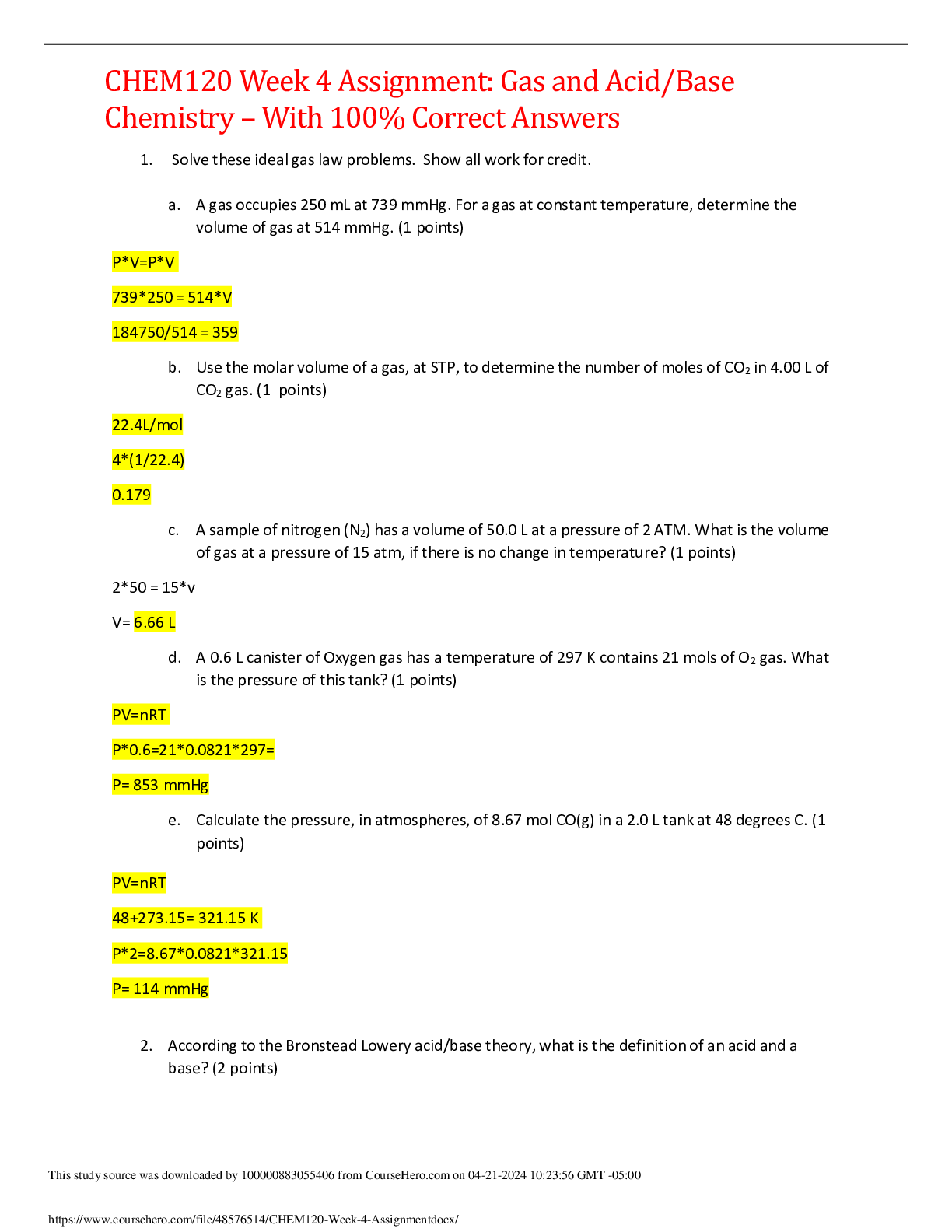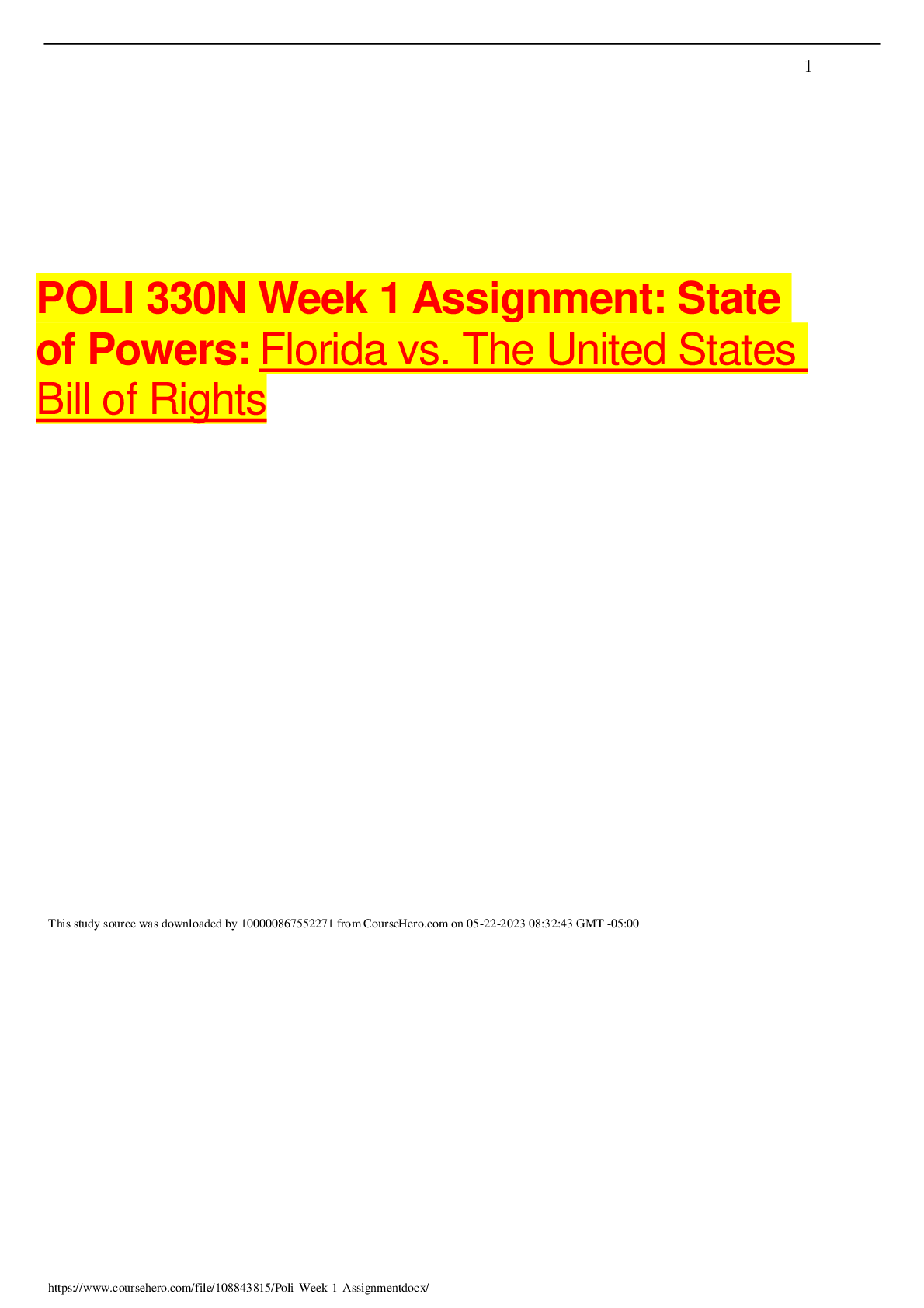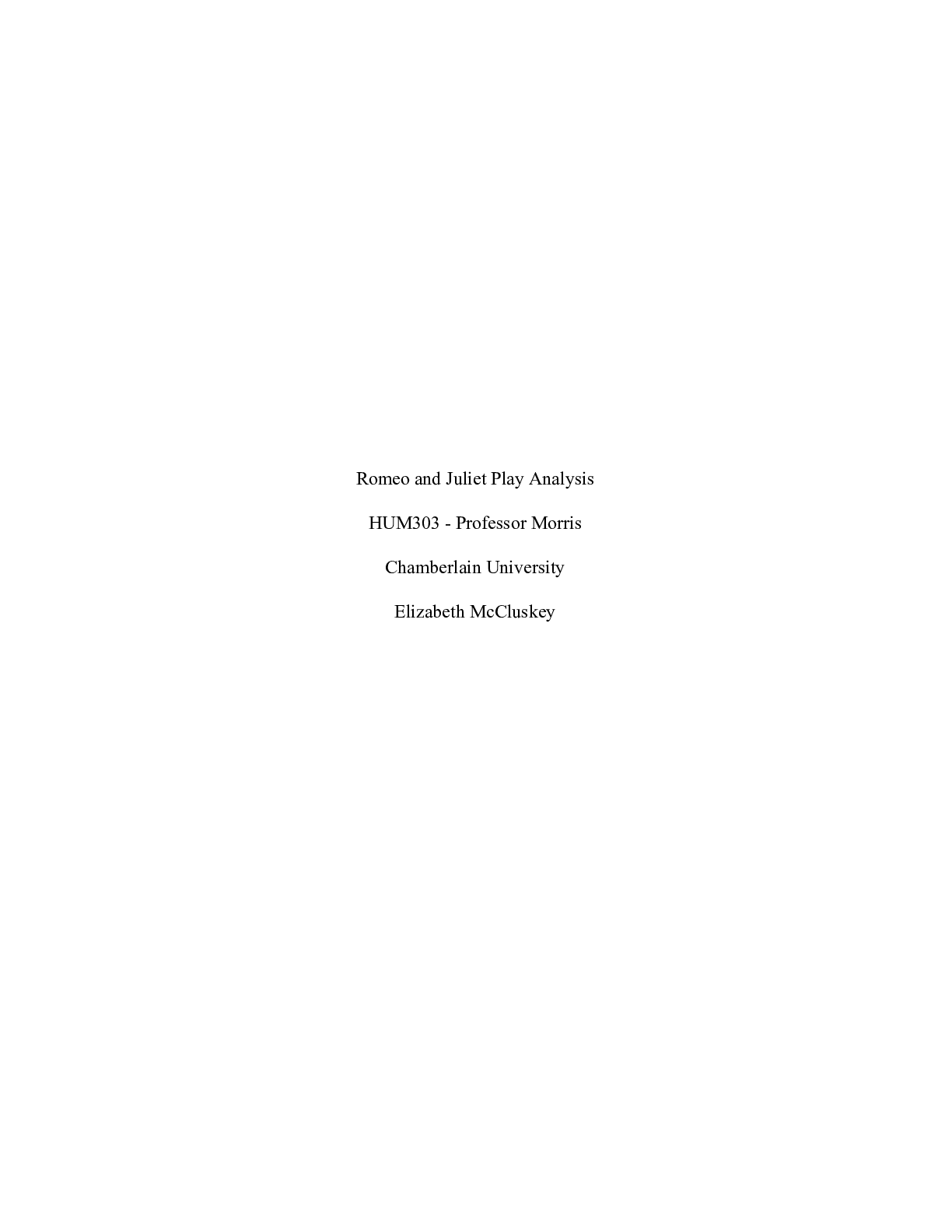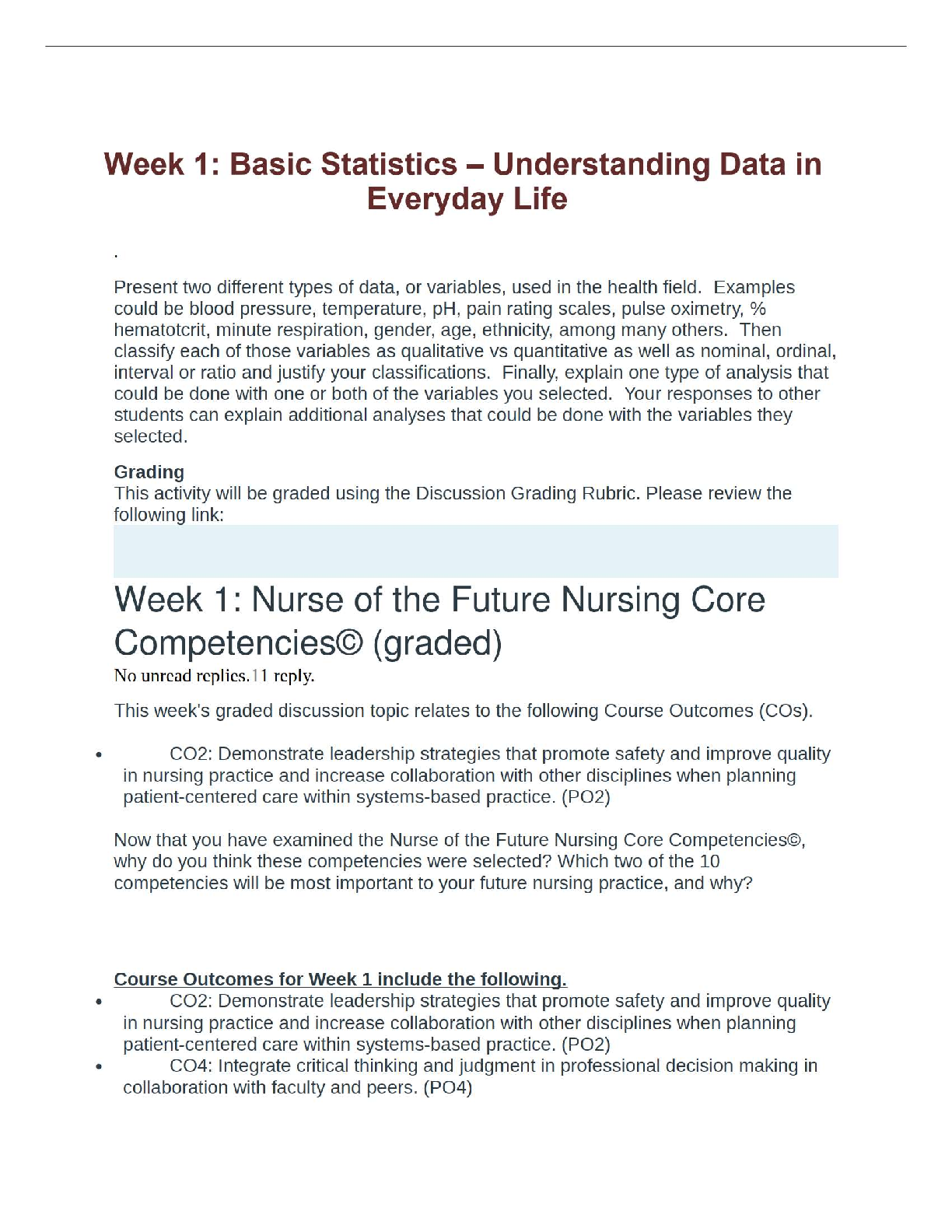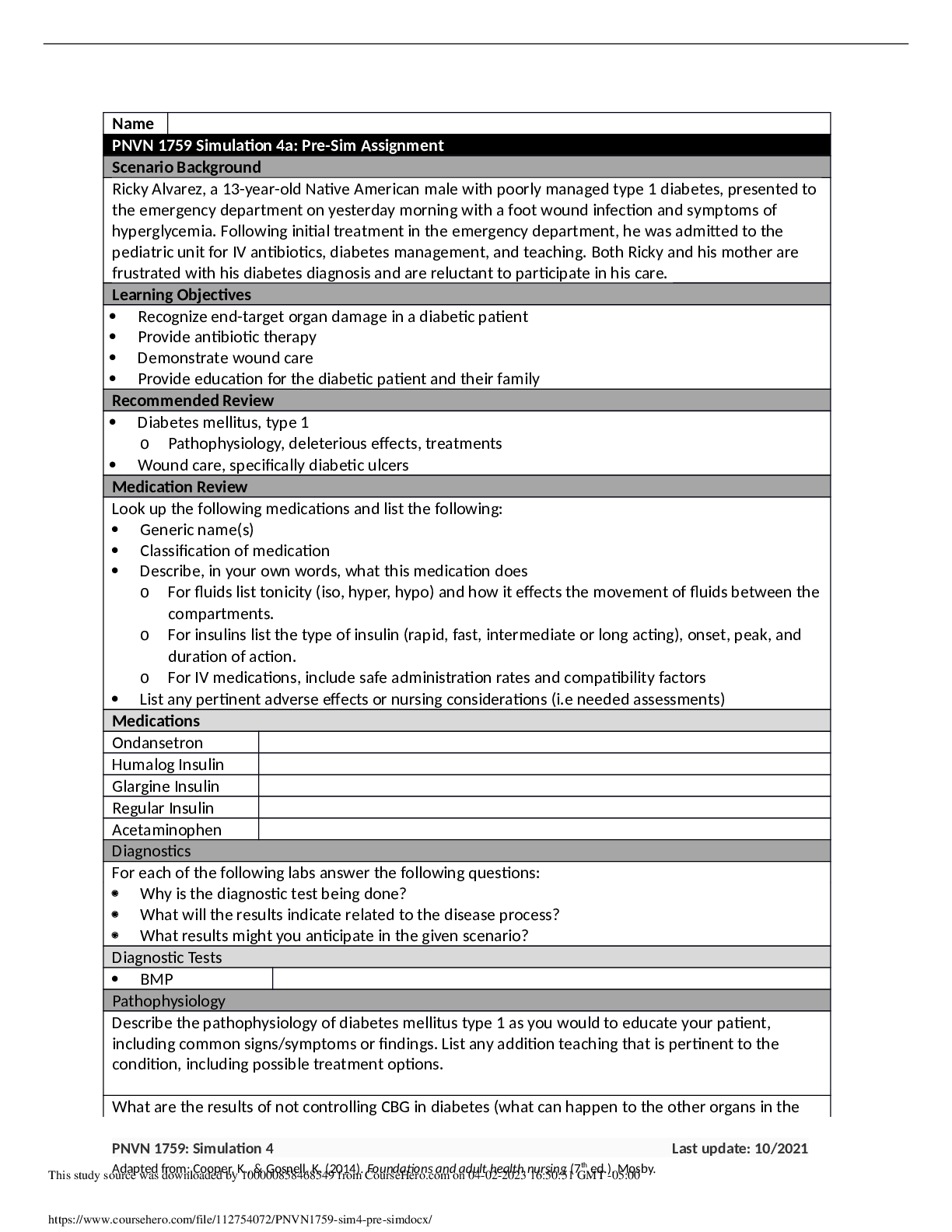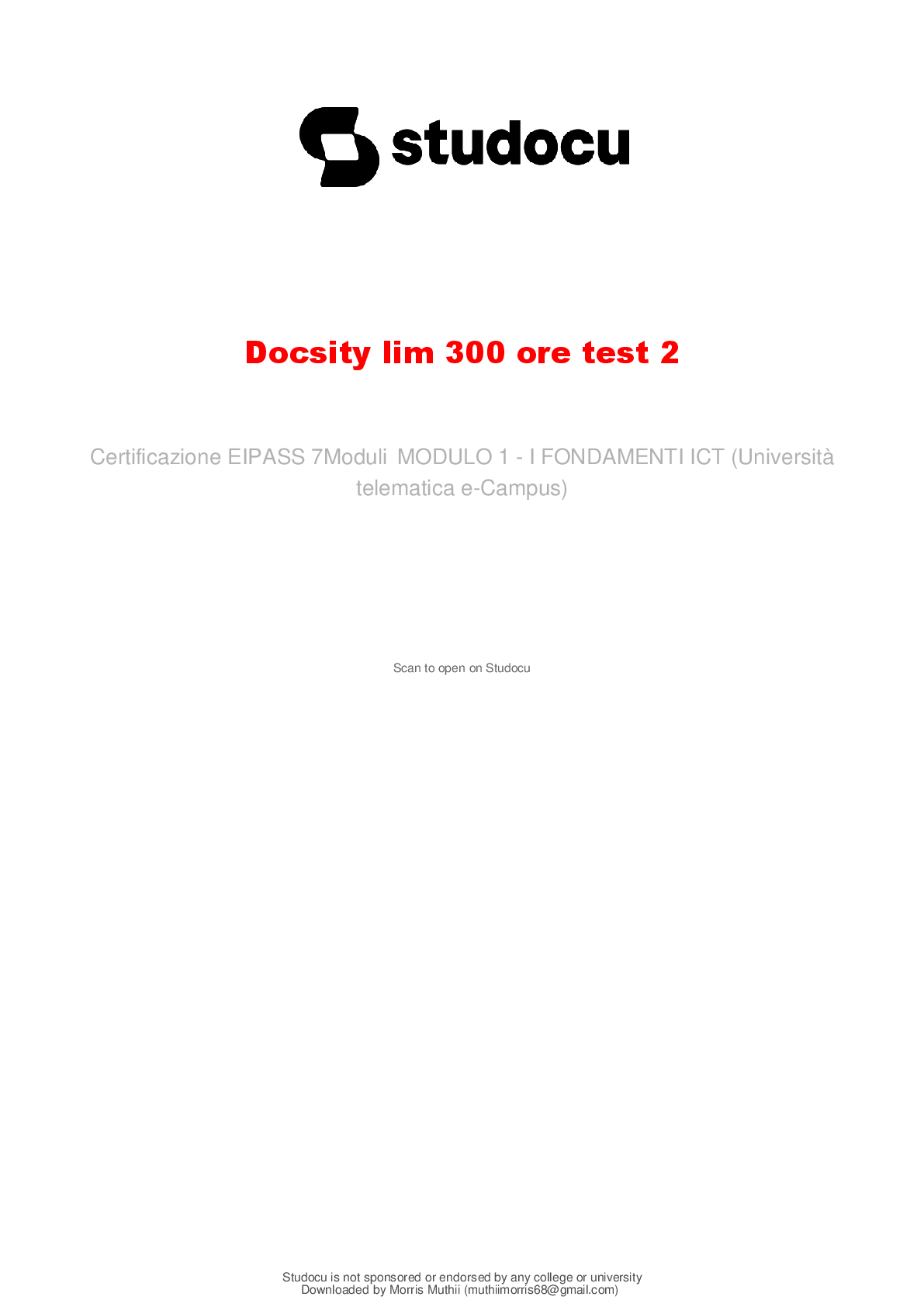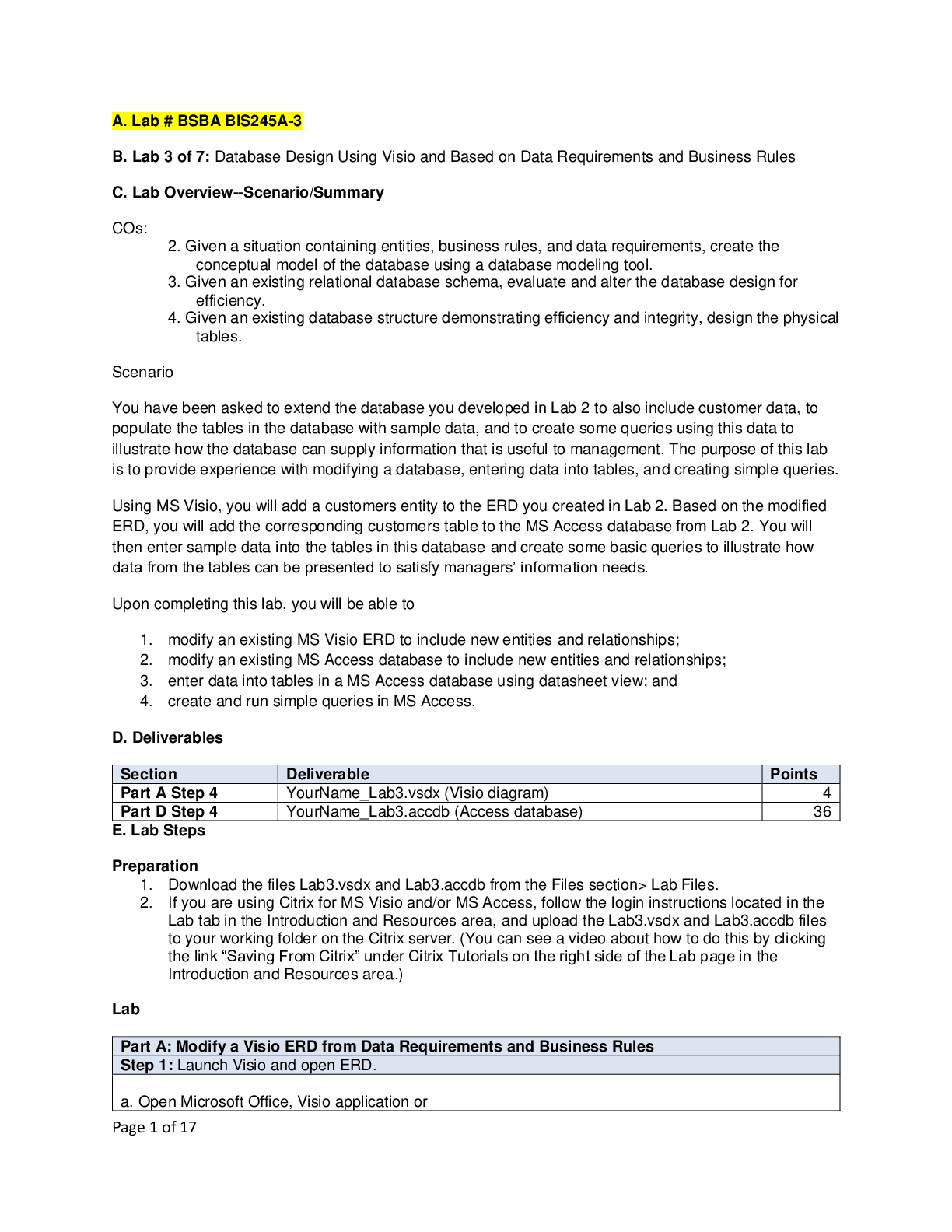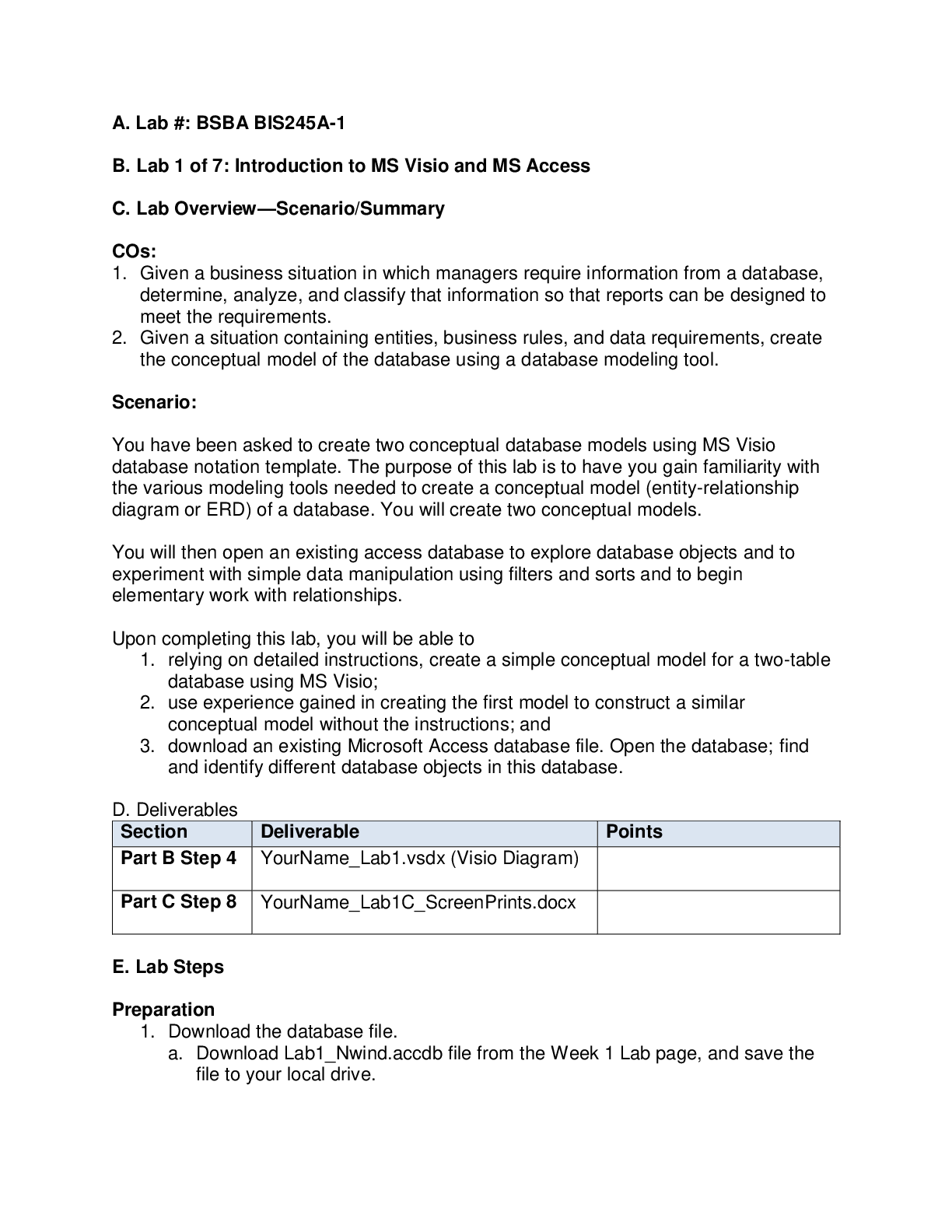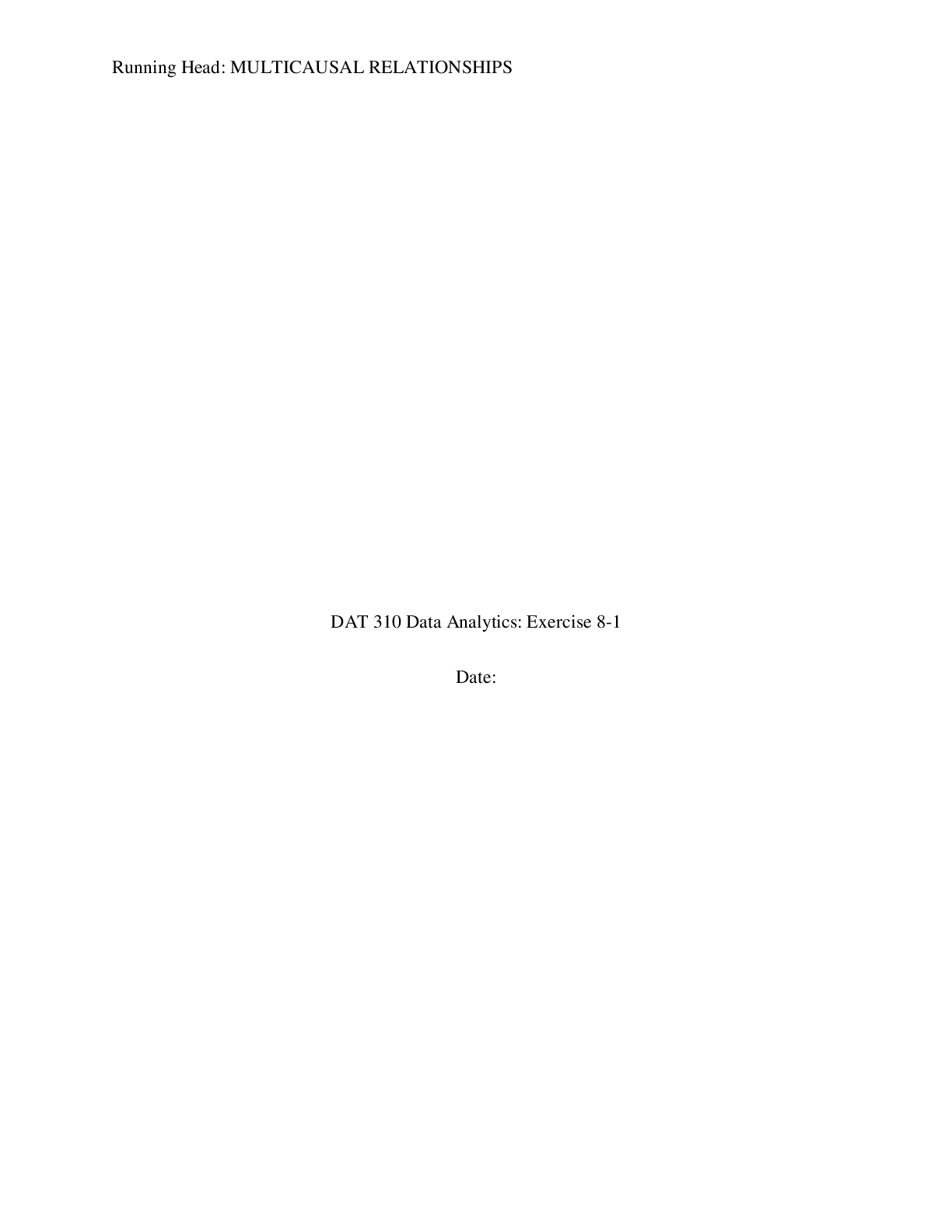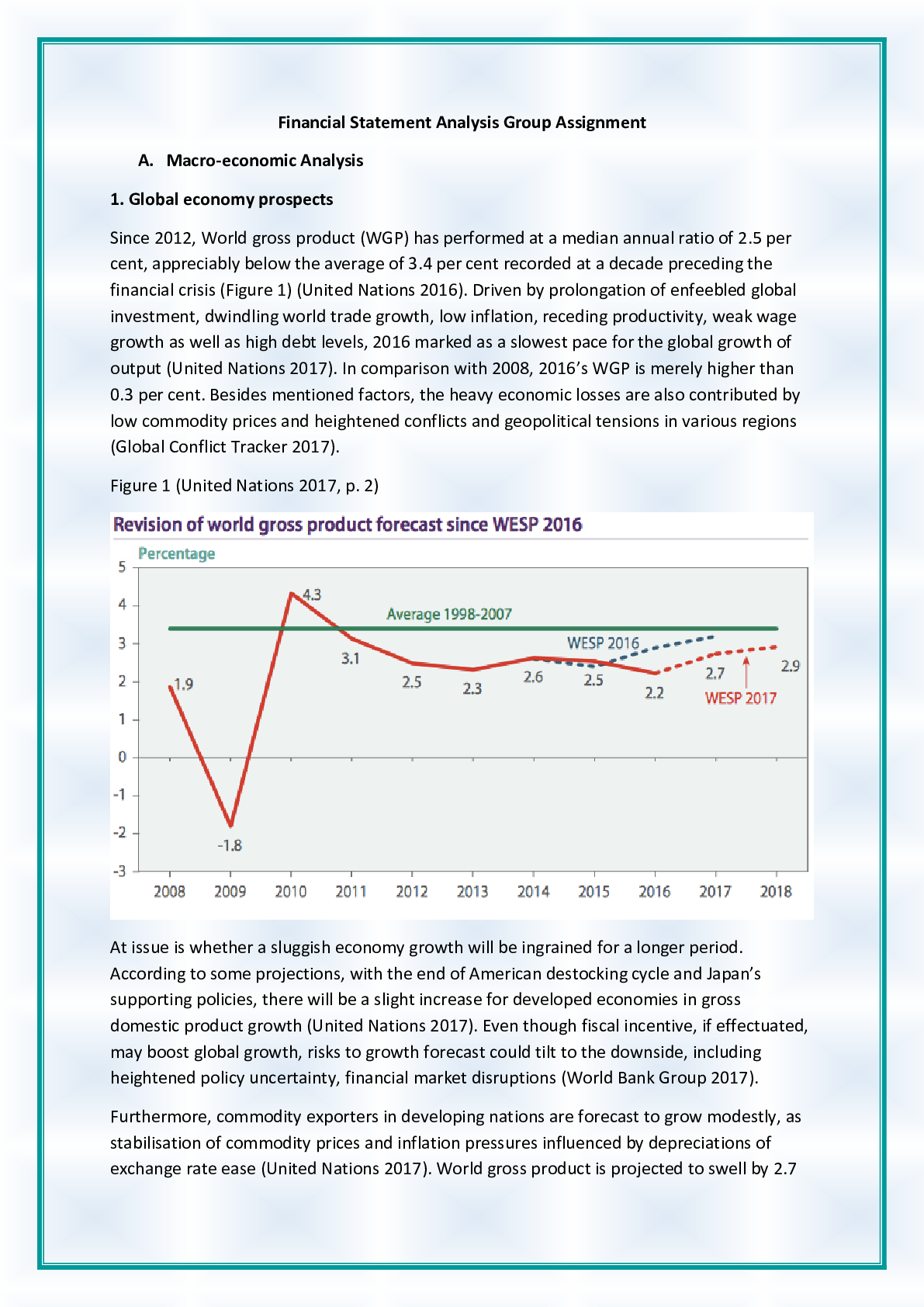AMERICAN HISTORY > ASSIGNMENT > HIST-405N Week 5 Case Study Assignment Option 2: Who is a Progressive- Download To Score An A+ (All)
HIST-405N Week 5 Case Study Assignment Option 2: Who is a Progressive- Download To Score An A+
Document Content and Description Below
HIST-405N Week 5 Case Study Assignment Option 2: Who is a Progressive- Download To Score An A+ The Progressive Movement of America Towards a Better Future The times of industrialization were ex ... citing but also fought with perils for the average American citizen. While striving to grow as a country, American citizens were often forgotten as individuals, deserving of justice and protection. Government was filled with representatives based on status and power. Progressives sought to change America and its standards into the ideals of forward movement while fighting for the integrity to its people. President Theodore Roosevelt Theodore Roosevelt, the 26th President of the United States, was born of privilege and suffered with asthma and frail health as a child. Due to his adversities in childhood, Roosevelt became a keynote in the time of industrialization and true to his younger years he sought to change destiny. He believed in meeting trials head-on, overcoming them, and sticking up for the “little guy”. He believed that the path to the top should not be filled with the suffering of others, but that it was paved with honesty, integrity, and hard work done by all. Roosevelt’s Idea of a Progressive Roosevelt defined Progressives as “men who, with fervor and broad sympathy and imagination, stand for the forward movement, the men who stand for the uplift and betterment of mankind, and who have faith in the people” (Roosevelt, 1912). He described them as those that sought limited work hours and better working conditions for laborers, better living conditions for those in squalor, and better treatment of all mankind. Progressives fought against the privileged and entitled and saw industrialization as a revolution in society and a way to provide better means for its people. Roosevelt states Progressives seek “social and industrial justice” and believe that government officials should be elected, and laws passed by the representatives they choose so as to “to increase the dignity, the worth, and the efficiency of each individual” (Roosevelt, 1912). They believe that the Constitution upon which the country was based is ever lasting and provides for security and justice for all Americans, not just the privileged. Also, they sought to help the farmers also prosper during the industrialization and not just the city dwellers and businessmen of society. Roosevelt believed that Progressives are leaders to the future of what America should be. Within the Progressive mind frame, honesty is paramount, and they should retain the quality of being far-sighted towards the future. Reactionaries: Opponents to Progressivism Reactionaries is how non-Progressive individuals were termed and were described as those that seek only their own best interests, to put those in power that are not Progressives, and “uphold privilege and favors the special interests” (Roosevelt, 1912); they were opponents to the ideals proposed by President Lincoln. Their motives were described as malicious and they showed no empathy for the under privileged. Reactionaries either did not understand the cause or didn’t care, although they may have meant well. Their thinking had little faith in mankind or their movement forward and were dubbed as being narrow minded. Reactionaries saw industrialization as a means to increase their wealth and favor given based on popularity and the norm. Roosevelt stated that they staved off “the will of the people” (Roosevelt, 1912). They controlled elections through money and power and candidates elected in this fashion did not represent the wants of the people they serve, nor the laws needed to protect such people. Non- Progressives are a wave of the past that did not want change, did not seek to undo the wrongs performed by lawmakers and courts, and stood idly by or did not watch at all the goings on around them. Roosevelt stated that Reactionaries knew and understood that despite President Taft campaigning as a Progressive that he indeed was not, and they helped seek his re-election for their own interests. Reactionaries thought themselves to be “immune from punishment” but Roosevelt described them as short-sighted and, in the end, self-destructive by not seeing the wants of the people (Roosevelt, 1912). Progressivism was a movement to seek justice for those of the present to provide justice for those of the future. The goals of Progressivism were to execute a standard of societal, governmental, and economic justice for the better good of all Americans. Regulation was the means to the end and breaking apart trusts and monopolies was one of many routes, such was the case with the Sherman Antitrust Act. Teddy Roosevelt’s proposed Country Life Commission sought to aid in the Progressivism movement through education of agricultural communities, and the Hepburn Rate bill was established to regulate railway trade with the help of the Interstate Commerce Commission. Skyrocketing prices had put the shipment of goods at jeopardy, especially by the forgotten farmers. In progressive movements towards safeguarding the American people the Pure Food and Drugs Act was enacted in 1906 to regulate the quality of food and drugs distributed to the public. Through the efforts of individuals, like President Theodore Roosevelt, and groups such as the Progressives the way of life for all Americans was improved. References Cooper, John Milton. (2019, May 24). Encyclopedia Britannica. Theodore Roosevelt. Retrieved from https://www.britannica.com/biography/Theodore-Roosevelt Harris, James T., Oehser, Paul H., and others. (2019, June 2). Encyclopedia Britannica. Theodore Roosevelt and the progressive movement. Retrieved from https://www.britannica.com/place/United-States/Theodore-Roosevelt-and-the- Progressive-movement Milkis, Sidney M. (2016, August 9). Encyclopedia Britannica. Progressivism: Political and social-reform movement. Retrieved from https://www.britannica.com/topic/progressivism Roosevelt, Theodore. (1912, April 31). Who is a progressive? Retrieved from https://teachingamericanhistory.org/library/document/who-is-a-progressive/ The U.S. National Archives and Records Administration. (2018, June 14). The Center for Legislative Archives. Hepburn rate bill. Retrieved from https://www.archives.gov/legislative/features/hepburn [Show More]
Last updated: 1 year ago
Preview 3 out of 5 pages

Loading document previews ...
Buy this document to get the full access instantly
Instant Download Access after purchase
Buy NowInstant download
We Accept:

Reviews( 0 )
$11.00
Can't find what you want? Try our AI powered Search
Document information
Connected school, study & course
About the document
Uploaded On
Jun 26, 2024
Number of pages
5
Written in
All
Additional information
This document has been written for:
Uploaded
Jun 26, 2024
Downloads
0
Views
77

